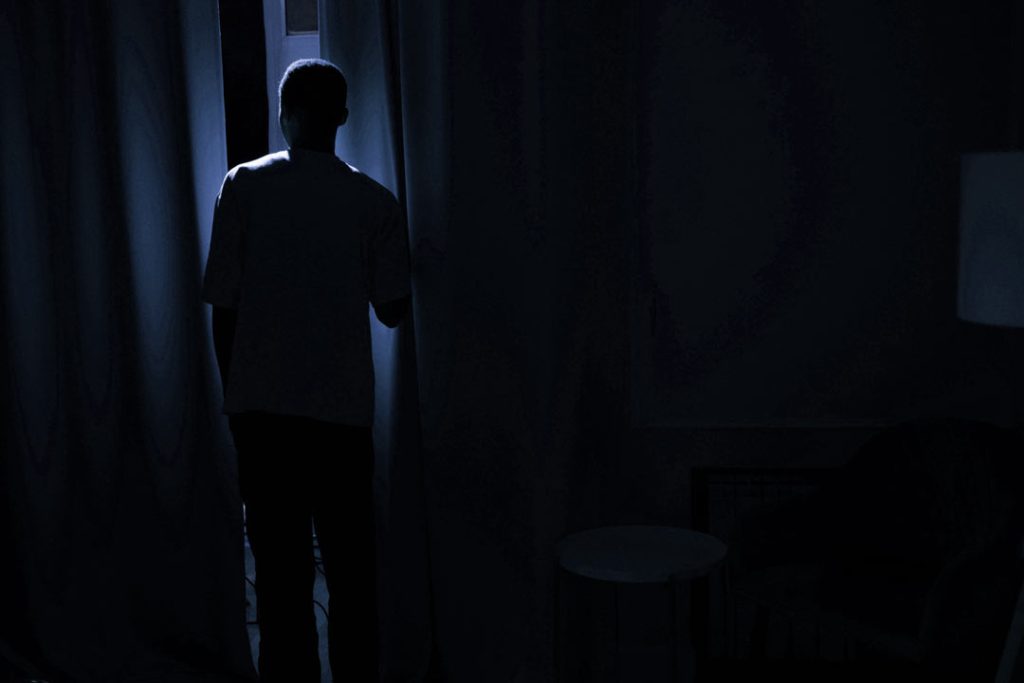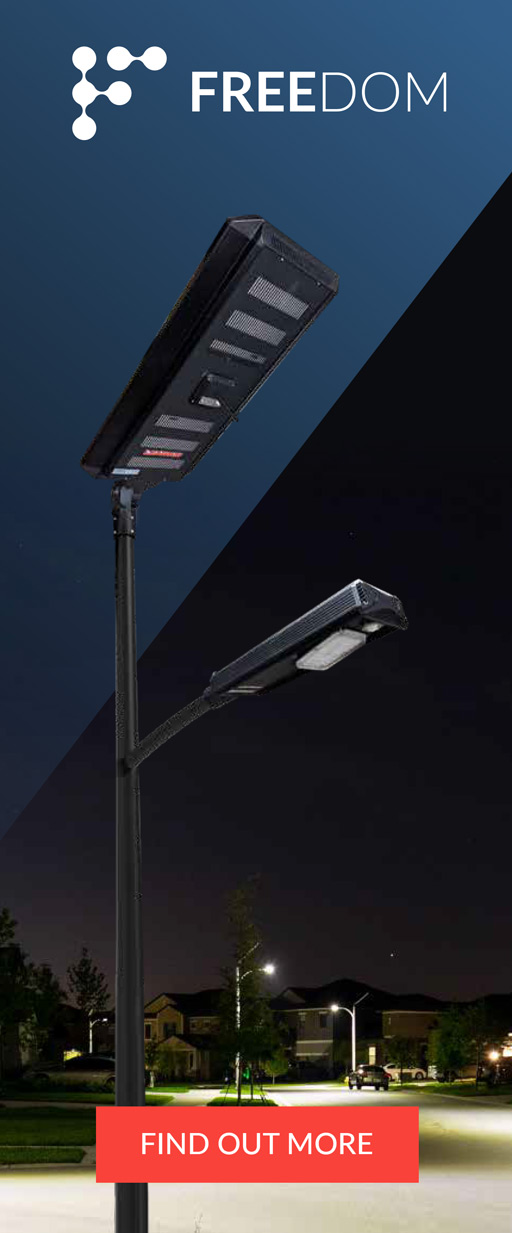Are street lights really making you sick?
A growing body of research is showing that street lights can not only hinder sleep but are also bad for your health. It's not all doom and gloom though. Innovative solutions like dark sky compliant street lights can illuminate public spaces without making people sick.
Street lights are an essential part of modern life, as common as powerlines and as indispensable as traffic lights, but they are also affecting our health in unexpected ways.
A paper published in the Health Promotion Journal of Australia, by Dr Margaret Grose, found that Artificial Light at Night (ALAN) from street lights had adverse effects on sleep patterns and circadian rhythms.
“ALAN is a growing, major concern for human health, through the disruption of the neuro-hormone melatonin… [which] alters circadian entrainment,” says Dr Grose.

Don’t leave the light on: the impacts of street lights on your health.
The potential helath risks of ALAN are only beginning to be understood. In 2007 the World Health Organisation declared ALAN as a carcinogenic risk for shift workers, shining a light on the issue in the mainstream media for the first time. Dr Grose warns that ALAN can lead to “increased cancer risks, [and] altered sleep and cognitive problems” not only for shift workers, but for the whole urban population.
A comprehensive paper, published in Sleep, a title of Oxford Academic Press, found that artificial light at night had the potential to increase chances of obesity, diabetes and hypertension. The study found that: “annual levels of outdoor [A]LAN estimated from satellite data have been associated with a higher risk of coronary heart disease in older adults.”
Another 2023 study published in Geroscience found that ALAN had the potential to influence neurodegeneration and could increase the risk of Alzheimer’s Disease. This paper also concluded that “light pollution could affect many systems of the human body, and data indicate[s] its indirect positive association with retina pathologies, cardiovascular damage, depression [and] cancer.”
The research is showing that ALAN is detrimental to our health by preventing our body’s ability to produce melatonin, which plays a fundamental role in bodily functions. According to the International Dark-Sky Association “melatonin has antioxidant properties, induces sleep, boosts the immune system, lowers cholesterol, and helps the functioning of the thyroid, pancreas, ovaries, testes, and adrenal glands.”
With these findings, the American Medical Association has formally recommended that communities “minimise and control blue-rich environmental lighting by using the lowest emission of blue light possible to reduce glare.” The ADSA has also introduced standards for safe street lighting in Australia, drawn up in accordance with legislative requirements to protect human health.
Unfortunately, these standards are often overlooked by councils struggling to strike the right balance on a range of competing community concerns like the reduction of crime and carbon emissions.
The personal toll of light pollution from street lights
Light trespass is defined as any light that spills beyond the area that is intended to be lit. For Jessa Thompson it was a glaring concern; shining right through her bedroom window.
“It was almost impossible to sleep,” she says. “My bedroom was lit up like a football stadium.”
The West Dapto resident contacted her local council and was advised there was little they could do. So, Ms Thompson addressed the issue herself, installing expensive metal roller shutters. She is adamant though that the onus should not be on residents’ to fix the problem.
“I’ve installed shutters, but this [is] only a semi-solution. It stops the light leaking in, but it also stops the fresh air too.”
This intrusion of light, caused by the 4,000 Kelvin LED street lights in her street is a common occurrence, with Ms. Thompson explaining that she found a whole community of affected people in online forums.
“One person wrote that it felt like a prison yard at night, another that they had to move houses,” she explained. “I was relieved to find that it wasn’t just me being a sook.”
The design of street lights can facilitate both light spill and glare, contributing to increased sky-glow and sleep disruption. The blue light rays that are emitted from these bulbs are to blame for the reduction in melatonin production in the body as blue rays are indicative of daytime, according to Dr Grose.
The International Dark-Sky Association (IDA) recommends that a bulb of no more than 3000 Kelvin (a warmer light than the default 4000 Kelvin street lights) be utilised after dark, following research conducted in their 2010 Seeing Blue report. In support of these, and other, findings, Dr Ken Wishaw of the ADSA, says: “if minimisation of indirect health effects is the aim, the studies tend to favour a less blue rich light, in the region of 3000 Kelvin.”
Despite these recommendations, councils around Australia are opting for the 4000 Kelvin electrical bulbs because of their brightness and efficiency. Dr Gross, in her report, said that Australian Local Governments “allocate as much as 50% of their total energy budget on street lights”, so the 4000 Kelvin standard LED has been an appealing option to minimise costs. According to Grose “[The Local Governments] focus has been on energy saving, not human health.”
A solar powered street light solution
“Street lights are vital to the safety and security of our community, but they don’t need to be bad for our health,” says Leadsun Managing Director, Matthew Pollard. Leadsun, as the world’s first solar street light manufacturer with an International Dark-Sky Association (IDA) certification, offers an alternative solution that won’t keep you up at night.
Leadsun’s solar street lights offer a healthier alternative to traditional, electric street light systems, with Dark-Sky recommended 3000 Kelvin low-glare colour temperature LED globes and SMART EYE technology. The Passive Infra-Red detection (PIR) in Leadsun’s SMART EYE system allows for optimal illumination for thirty-seconds when motion is detected. These SMART sensors also reduce power consumption, making it both environmentally and economically responsible, as well as better for your health.
“We have combined the community need for public lighting with human health and comfort at the forefront of our design process,” said Mr Pollard. Leadsun’s solar street lights are healthier by design, with super-sharp cut-off optics that prevent sky-glow and light trespass at night. Leadsun solar street lights are the healthy choice, where well-lit and wellness go hand in hand.
Grose, Margaret Dr. ‘Artificial light at night: A neglected population health concern of the built environment’, Health Promotion Journal of Australia, (2014). Accessed via https://www.researchgate.net/publication/268986811_Artificial_light_at_night_A_neglected_population_health_concern_of_the_built_environment on the 7th of March 2024 (and onwards).
Karska, J., Kowalski, S., Gładka, A. et al. ‘Artificial light and neurodegeneration: does light pollution impact the development of Alzheimer’s disease?’, GeroScience, (2024). Accessed via https://doi.org/10.1007/s11357-023-00932-0 on the 12th of March 2024 (and onwards).
International Dark Sky Association, ‘Seeing Blue’, (2010). Accessed via https://darksky.org/app/uploads/bsk-pdf-manager/29_SEEINGBLUE(1).PDF on the 11th of March 2024 (and onwards).
Minjee Kim, Thanh-Huyen Vu, Matthew B Maas, Rosemary I Braun, Michael S Wolf, Till Roenneberg, Martha L Daviglus, Kathryn J Reid, Phyllis C Zee, Light at night in older age is associated with obesity, diabetes, and hypertension, Sleep, (2023). Accessed via https://doi.org/10.1093/sleep/zsac130 on the 11th of March 2024 (and onwards).
Wishaw, Ken Dr. ‘The Problems of LED lighting. Is there a solution at hand?’, Trove, Brisbane Astronomical Society, (2017). Accessed via https://nla.gov.au/nla.obj-2001624275/view on the 12th of March 2024 (and onwards).

